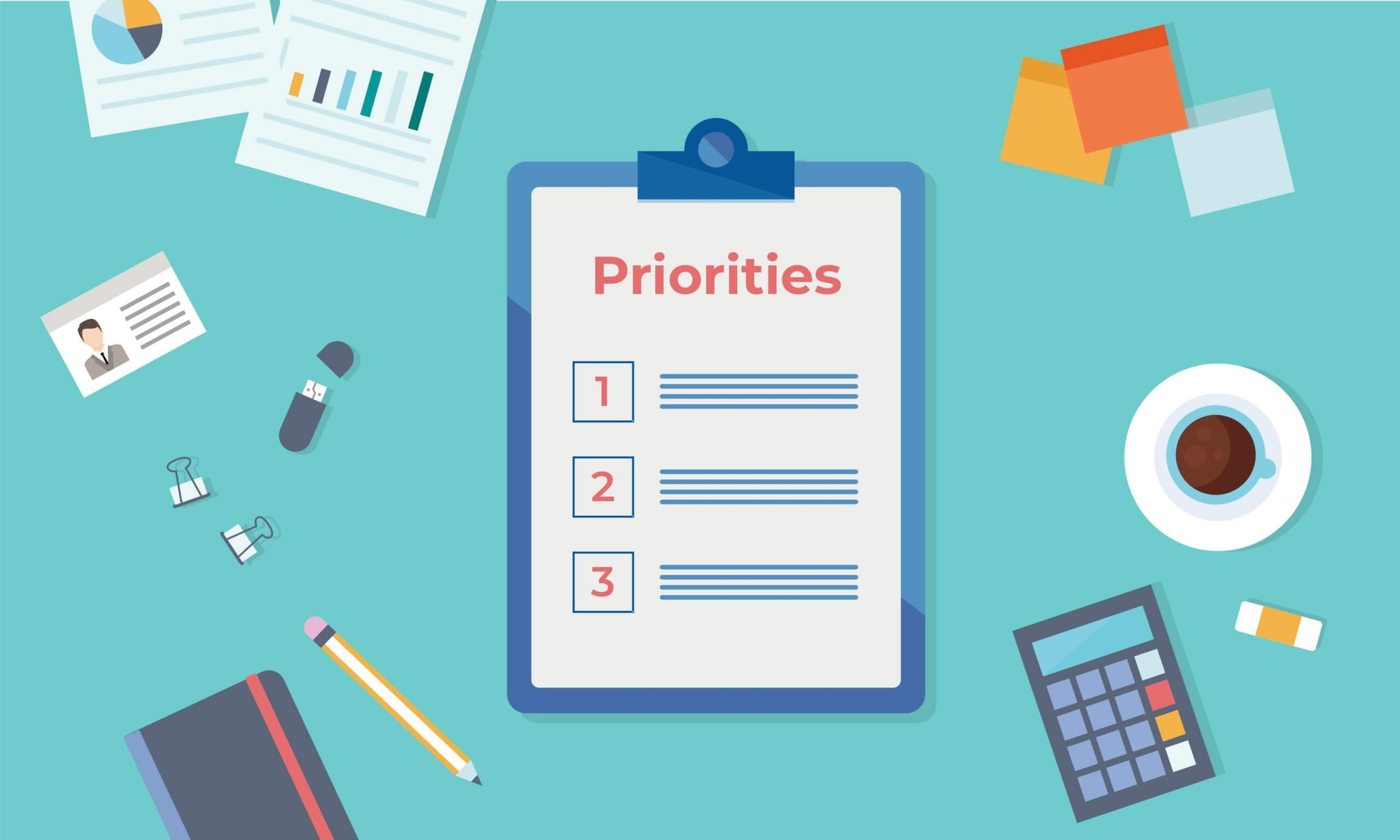In the fast-paced world of agile product development, the ability to prioritize effectively can make the difference between a successful project and a chaotic one.
The agile product owner is at the heart of this process, juggling a multitude of tasks while striving to deliver maximum value to their customers.
In this article, we delve into the world of prioritization techniques for agile product owners, exploring strategies that not only streamline their workflow but also contribute to the success of the entire agile team.

Understanding Agile Prioritization
Agile prioritization is the compass that guides the ship of project management in the right direction. At its core, it involves determining the order in which tasks are tackled based on their importance and potential impact.
This process isn’t just about checking off items on a to-do list; it’s about delivering customer value and ensuring customer satisfaction at every step of the way.
Agile prioritization dances harmoniously with the principles of agile development. As the product evolves through iterative cycles, the prioritization strategy flexes to accommodate new insights and changes. The collective efforts of an agile team center around providing customer value, and the prioritization technique acts as the North Star, leading the way.
The main goal of agile prioritization is to accomplish the work and deliver maximum business value on time.

Key Agile Prioritization Techniques
In the dynamic world of agile product development, where tasks and priorities can change as quickly as the weather, having effective prioritization techniques is like having a reliable compass to navigate through the storm.
These techniques help product owners and teams make smart decisions about what to do first, ensuring that the ship stays on course and reaches its destination successfully.
Let’s explore some of the key techniques that product owners use to set their sails right:

MoSCoW Model (Must, Should, Could, Won’t)
Ever tried to pack for a trip and realized you can’t bring everything? The first agile prioritization technique in our list, MoSCoW Model is a bit like that—it’s a clever way to sort tasks into four categories:
Must-Have, Should-Have, Could-Have, and Won’t-Have.
Think of it as packing your suitcase for an adventure. You put the essentials (Must-Have) in first, like your toothbrush and passport. Then come the things that would be nice to have (Should-Have), like a cozy sweater.
After that, there are things that would be cool but aren’t necessary (Could-Have), like a fancy hat. Finally, there are things you leave behind (Won’t-Have), like your pet elephant—it’s just not practical!
This technique is like a magic wand for managing competing demands. It helps agile teams decide what needs to be done urgently (Must-Have) and what can wait (Could-Have or Won’t-Have).
It’s also great for keeping an eye on what customers really need. By focusing on Must-Have and Should-Have tasks, teams can make sure they’re addressing customer needs and delivering value.
Relative Weighting Method
Imagine you have a bunch of delicious fruits, and you want to decide which one to eat first. The Relative Weighting Method is a bit like giving each fruit a score based on how much you want to eat it. You might give juicy strawberries a high score, while apples get a slightly lower score. This helps you figure out which fruit is the star of your snack time.
In the world of agile, this agile prioritization technique assigns numerical values to tasks based on their importance. It’s like giving tasks a superpower—tasks with higher numbers are like superheroes, and tasks with lower numbers are like sidekicks. This helps product owners allocate their time and resources wisely. They can focus more on tasks with higher scores, knowing they’ll have a massive impact on the project.
Priority Poker
Imagine you and your friends are trying to pick a movie for movie night. Each of you gets a handful of cards, and you use them to vote for the movie you want to watch. Priority Poker is a bit like that, but instead of movies, you’re voting on tasks. Each team member gets to vote on how important they think a task is by using special cards. It’s like a game where you’re all working together to decide what to do first.
This agile prioritization technique isn’t just fun—it’s a smart way to maximize efficiency. It gets everyone involved in deciding what’s important, and it encourages discussions within the team.
Plus, it’s a great way to foster team engagement and make sure everyone’s ideas are heard.
Kano Model
Imagine you’re planning a party, and you want to make sure your guests have a great time. The Kano Model is like having a secret formula for figuring out which party activities will make your guests super happy. It divides activities into three categories:
Basic Needs, Performance Needs, and Delight Needs. Basic Needs are things your guests expect, like snacks. Performance Needs are things that make the party even better, like a live band. Delight Needs are the unexpected things that make your party legendary, like a surprise visit from a famous celebrity!
In agile, the Kano Model helps teams decide which features will make customers really happy. By focusing on what will delight customers, product owners can create a product that not only meets expectations but also adds that extra touch of magic.
Cumulative Voting
Imagine you and your friends are deciding what toppings to put on a pizza. Each of you gets a handful of votes, and you can distribute them however you like among the toppings. The more votes a topping gets, the more likely it is to end up on the pizza. Cumulative Voting is like that—it’s a way for the team to work together and decide which tasks are most important.
This technique is fantastic for reducing risk and making decisions as a team. It ensures that everyone’s voice is heard and that the team reaches a consensus. It’s like a democratic way of prioritizing tasks, where each team member gets to contribute their ideas and preferences.
Factors Influencing Agile Prioritization
Several factors play a significant role in influencing agile prioritization decisions. These factors help product owners determine the order in which tasks and features should be addressed. Understanding and considering these factors is crucial for effective project management and successful product development.
Here are some of the factors that influence prioritization:
Customer Needs and Value: Understanding customer needs and delivering value to customers is at the heart of agile prioritization. Tasks that directly address customer pain points or provide substantial value are often given higher priority.
Market Opportunities: Seizing timely market opportunities or gaining a competitive advantage can influence the prioritization of tasks that capitalize on these openings.
Cost of Delay: While not a traditional technique, the concept of the Cost of Delay—quantifying the potential economic impact of delaying tasks—can influence the urgency and importance of prioritizing certain tasks.
Urgency and Impact: Important tasks or tasks with higher urgency and immediate impact on project goals are often prioritized to ensure that critical needs are addressed promptly.
Available Resources: The availability of resources such as time, budget, and manpower affects the order in which tasks can be completed. Efficient resource allocation is crucial for successful project execution.
Practical Implementation
Now that we’ve uncovered the treasure trove of agile prioritization techniques, it’s time to put them into practice. The real magic happens when these techniques come to life, guiding product owners through the exciting journey of turning ideas into reality.
Let’s roll up our sleeves and explore how these techniques manifest in the hands-on world of product development.
Prioritization Process: Navigating the Priority Maze
Imagine you’re embarking on a grand adventure, and you need a detailed map to guide you through uncharted territories. The prioritization process is that map—a structured guide that helps product owners make informed decisions about what to do first.
Further prioritization process helps the agile team to consider the bare minimum features necessary to create customer value.
Just like a master chef combines ingredients to create a delicious dish, product owners blend various elements to create a recipe for success.
Involving Stakeholders
Like a captain gathering a skilled crew for a ship, product owners bring together stakeholders from different backgrounds. These stakeholders are like the compass, pointing toward the true north of customer needs and project goals.
Conducting Market Research
Imagine you’re a detective, gathering clues to solve a mystery. Market research is your magnifying glass, helping you understand your customers’ desires and expectations. By studying the market landscape, you can uncover insights that inform your prioritization decisions.
Aligning with Business Objectives
A ship without a destination is adrift. Similarly, tasks without clear alignment with business aims can lead to confusion. Product owners act as navigators, steering the ship toward its destination by ensuring that tasks are in sync with overarching business goals.
Agile Tools for Prioritization: Unleashing the Toolbox
Picture a craftsperson with a well-equipped toolbox, ready to create a masterpiece. Product owners wield their toolbox filled with agile tools, each serving a unique purpose in the art of prioritization.

Product Backlog
Think of the product backlog as a canvas, waiting to be painted with strokes of value. It’s a dynamic list of tasks, ideas, and features that represent the heart of your project. Product owners constantly refine and reorder this canvas to reflect changing priorities and emerging insights.
User Research
Just as a storyteller listens to their audience, product owners engage in user research to hear the voice of their customers. Through surveys, interviews, and observations, they gather firsthand insights that shape the direction of the project.
Customer Feedback
Imagine your project as a gem that needs refining. The feedback you get from the customers is your polishing cloth, revealing areas that need improvement and shining a light on hidden opportunities. Product owners use this feedback to fine-tune their approach and ensure customer satisfaction.
Incorporating New Ideas
Innovation is like a bubbling cauldron of ideas, waiting to be harnessed. Product owners embrace this spirit by constantly seeking novel ideas and perspectives. Just as a chef experiments with new ingredients, product owners infuse fresh ideas into their prioritization process, keeping it vibrant and dynamic.
User stories
Out of these tools, think of user stories like superheroes. They pack in the details of a task or feature, answering questions like “who,” “what,” and “why.” They’re like a spotlight on what users want, need, and dream about. Just as superheroes save the day, user stories save us from guessing what our users really care about by showing us their wishes and challenges.
As the prioritization process and agile tools intertwine, product owners embark on a journey of discovery, problem-solving, and continuous improvement.
Just as a skilled chef crafts a masterpiece by blending ingredients with finesse, product owners create a symphony of customer value, innovation, and project success.
Conclusion
In the ever-evolving landscape of agile product development, prioritization techniques act as the compass, guiding agile product owners toward success.
We’ve explored a colorful palette of strategies, from the MoSCoW Model to Cumulative Voting, each adding its unique hue to the canvas of project management.
As we wrap up our journey, remember that agile prioritization isn’t just a series of tasks—it’s an art form that, when mastered, can elevate your product, delight your customers, and shape the course of your success.
So, go forth, prioritize with purpose, and let your agile product flourish in the garden of innovation.

People Also Ask (FAQs)
What are agile prioritization techniques, and why are they important for agile product owners?
They are strategies that product owners use to determine the order in which tasks should be tackled. They help agile teams focus on what matters most, ensuring efficient project management and customer satisfaction. By employing these techniques, product owners can make well-informed decisions, optimize resource allocation, and keep the team aligned toward common goals.
How do agile prioritization techniques differ from traditional methods of prioritization?
These techniques differ from traditional methods by emphasizing adaptability and collaboration. Unlike rigid top-down approaches, agile prioritization involves the entire team, including the agile team and scrum team. It takes into account changing customer needs, emerging insights, and iterative development. This dynamic approach ensures that priorities remain flexible and aligned with the evolving project landscape.
Can agile prioritization techniques be applied to different types of projects beyond software development?
Absolutely! While these techniques are commonly associated with software development, their principles can be adapted to various projects and industries. Whether you’re designing a new product, planning marketing campaigns, or managing a creative project, these techniques can help you make informed decisions, allocate resources effectively, and achieve desired outcomes. The essence of agile prioritization—focusing on value and adapting to change—applies to a wide range of endeavors.



